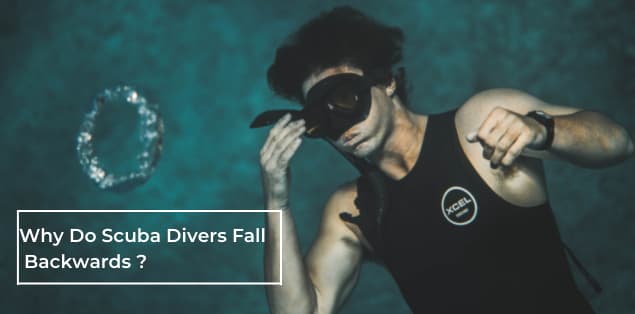So, why do scuba divers fall backwards? Water aficionados know that scuba diving is an adrenaline-pumping adventure sport. However, you might not know if you are a beginner, “why do scuba divers fall backward?” At the same time, pro divers with years of diving experience know the importance of diving backwards. Because let’s face it, when scuba divers dive backwards, they introduce themselves to enter the water most safely via smaller boats.
This article will cover everything we could possibly include to make you an informed decision for your next scuba diving excursion. We will also talk about other entry methods and the average duration of scuba diving.
Let’s jump to the basics first!
Is Scuba Diving Exciting?

Yes, scuba diving is an exciting adventure activity that allows divers to see underwater marine life. The diver dives into the deeper pockets of the sea up to 50 ft to see the coral colonies. As a bonus, the diver sees the featured marine creatures under the sea belt, from red tooth triggerfish to tip reef sharks.
What Is Back Roll Entry in Scuba Diving?
It is one of the best ways to enter the water from small or rigid inflatable boats. In this water entry type, the diver minimizes the rocking motion for everyone else on the boat. Even the certified pro-level divers suggest the backward roll entry over other diving techniques. Continue reading to find out what makes scuba divers dive backward.
Why Do Scuba Divers Fall Backwards Into the Water?
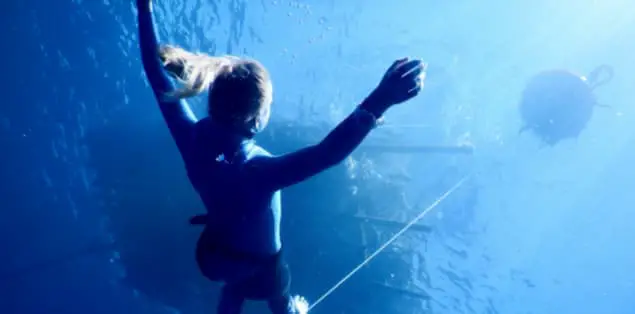
In a nutshell, not all dive boats have an adequate center of gravity. In addition, the backward roll minimizes the rocking motion for everyone on board. Furthermore, the diver avoids injury and enjoys the liberty to control the gear on the body.
Most importantly, falling backward helps avoid tank damage – important diving gear on the bank. Understand the simple fact that the diver’s back is the center of the mass due to the tank. Now, if he/she stands on the side of the boat, the chances are high that the diver will cause injury to the people.
Advantages of Backward Roll
One needs to be aware of the advantages of backward roll in scuba dive. The same is one of the best entry methods with scuba gear. Scroll on!
- Rocking motion is controlled, and hence, small boats remain stable.
- Falling backward represents the probability that your mask will not rip off!
- The diver avoids the risk of the tank slamming in the back after hitting the water surface.
- Frankly, the backward roll is the most sorted entry method from a small boat.
Steps to Dive Backwards from A Vessel or Boat
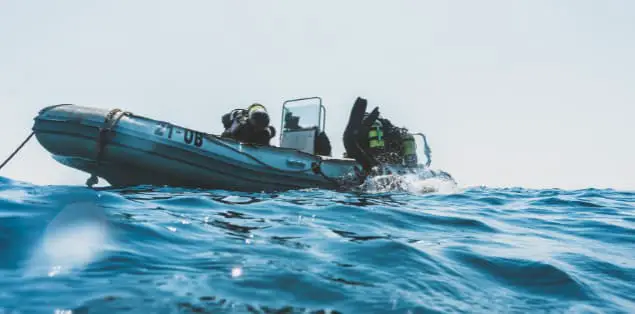
- Finalize the seated entry and ensure all your gear.
- Put your face inward when you sit on the edge of the boat.
- Before you enter the water, cross your ankles to put your legs together.
- Also, check all the gear before taking the plunge.
What Are Some Other Entry Techniques?
If you think diving backward is the only entry method, you are in constant flux. On a good note, giant stride entry from a stable platform is another technique other divers follow. However, the right one to perform hover on your situation is if you are planning shore diving.
Below is the breakdown of the other entry techniques:
- Giant Stride Water Entry
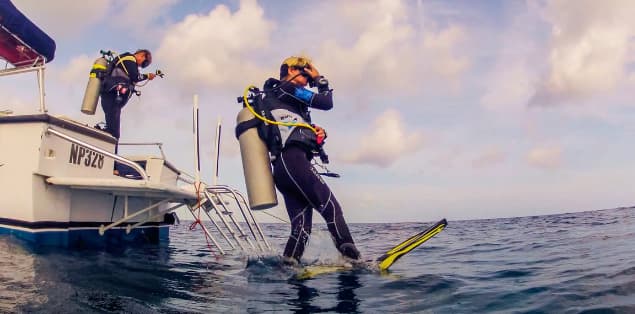
If you want to enter the water from the jetty, giant stride water entry sounds good. Perform this only if you want to explore the deeper pockets of the sea.
- Seated Entry
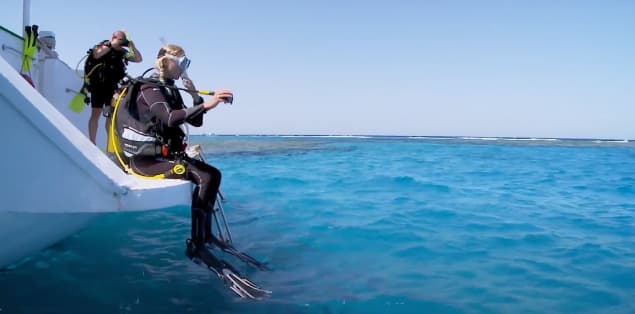
If you want to test your adrenaline in shallow water, opt for the seated entry technique. By picking the same, enter the water quietly. We suggest you choose this only when the platform is unstable.
Why Can’t Scuba Divers Go Straight Up?
You can’t swim straight up when scuba diving. There is a reason why it is so! More often, divers feel decompression sickness.
What Happens If You Fart While Scuba Diving?
Far from smaller or larger boats, farting is something out of context. But it still happens. However, you can control it, and you should be! Farting underwater while wearing a wetsuit can rip a hole in the diving suit. As a result, underwater fart triggers decompression.
In addition, it is easy to identify the fart underwater due to bubbles formation. Moreover, farting depends on the depth of the water and its pressure, and the only concern is bubbling. Don’t leave your wetsuit so; hence, experts recommend avoiding farting while scuba diving.
Final Words – Why Do Scuba Divers Fall Backwards?
Now you know why divers choose the backward dive roll entry technique over other techniques. By picking the same, divers protect the gear’s integrity. However, backward roll entry is suitable for small boats with limited space entry or rigid inflatable boats.
Give the backward roll a shot on your next diving excursion on small boats. On the flip side, opt for the seated entry if you have mobility problems. Lastly, a giant stride is suggested only when on a stable surface.
Faq’s About Scuba Diving
Q. Can a non-swimmer indulge in scuba diving?
Ans: Yes, but there are limits to the activity. However, everyone needs to undergo a diving course to embrace the diving knowledge before you finally take the plunge.
Q. How to identify the best spot for diving?
Ans: Look at the shore dotted with PADI Certified Instructors or Dive Centers.
Q. What’s the average duration of scuba diving?
Ans: The activity lasts for 20-40 minutes.
Q. When is the best time for scuba diving?
Ans: any time of the year is good for scuba diving. However, you must avoid the monsoon because waves swell.
Q. What’s the minimum and maximum depth for scuba diving?
Ans: The minimum depth for diving is 30-60 feet.
